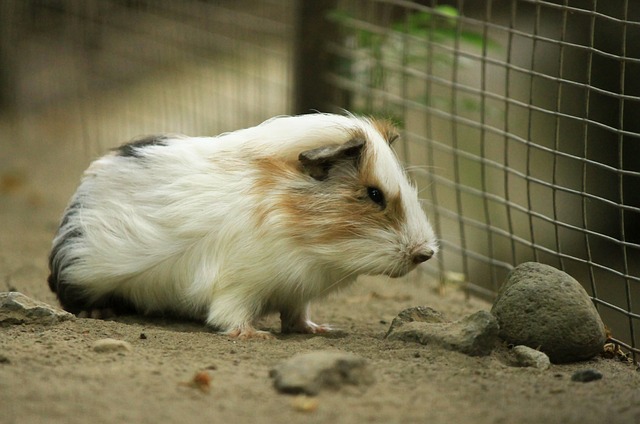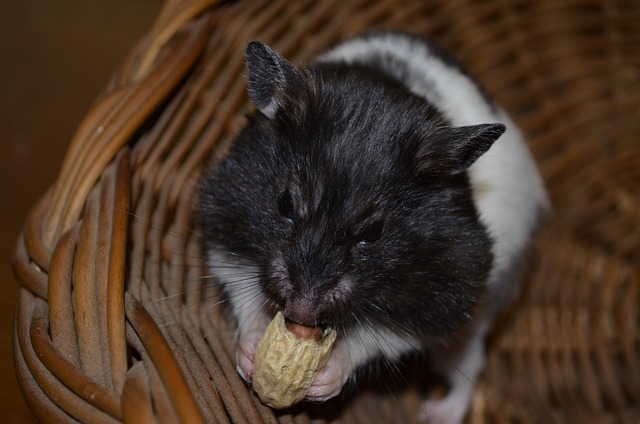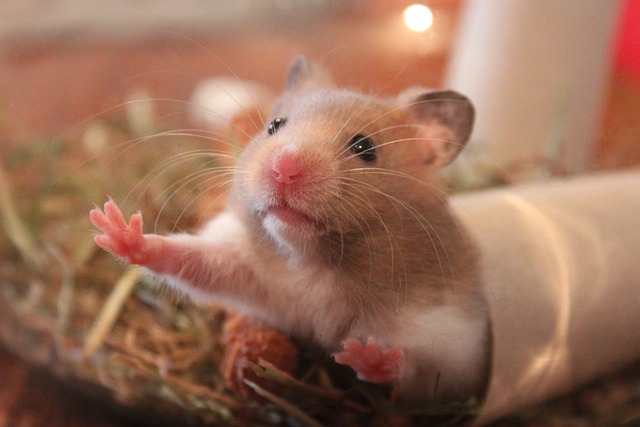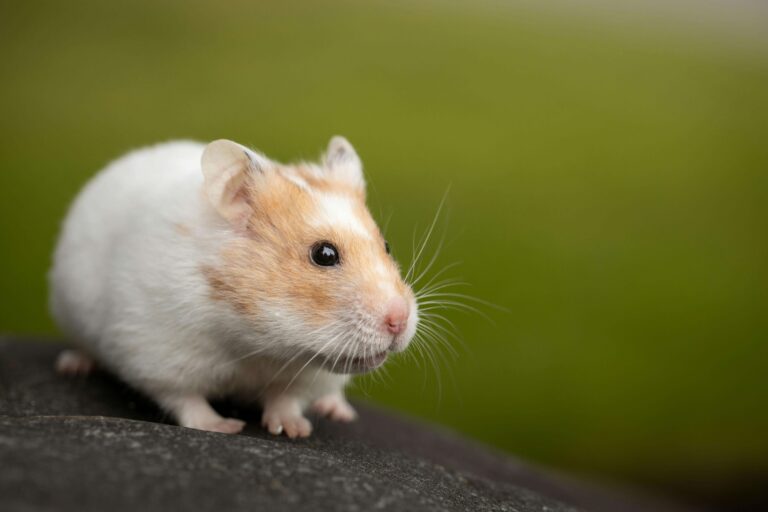Are Male Hamsters More Aggressive – Hamsters.pk
Understanding Hamster Aggression: Causes and Triggers
Hamsters are popular pets known for their cute appearance and relatively low maintenance. However, many hamster owners may encounter instances of aggression in their furry companions. Understanding the causes and triggers of hamster aggression is crucial for providing a safe and comfortable environment for your pet. In this article, we will explore the various factors that contribute to aggressive behavior in hamsters, particularly focusing on male hamsters.
Territorial Instincts
One of the primary reasons for aggression in male hamsters is their strong territorial instincts. In the wild, hamsters establish and defend their territories to ensure access to resources such as food, water, and shelter. When kept as pets, male hamsters may perceive their cage as their territory and display aggressive behavior towards any perceived threats, including other hamsters, pets, or even human hands.
Hormonal Influences
Another significant factor contributing to aggression in male hamsters is hormonal influences. As hamsters reach maturity, typically around 6-8 weeks of age, their hormones surge, leading to increased aggression and territorial behavior. This is particularly noticeable in unneutered male hamsters, as the presence of testosterone can intensify aggressive tendencies.
Lack of Socialization
Hamsters are solitary animals by nature and do not require the company of other hamsters to thrive. However, a lack of proper socialization during their early life stages can contribute to aggressive behavior. Hamsters that have not been handled regularly or exposed to positive human interaction may view any intrusion into their space as a threat, resulting in defensive aggression.
Inadequate Living Space
Providing your hamster with an appropriately sized cage is essential for minimizing aggressive behavior. Overcrowded or small living spaces can lead to increased stress levels and territorial disputes. Male hamsters, in particular, require ample space to establish their territory and engage in natural behaviors such as burrowing, exploring, and foraging.
Stressful Environment
Environmental stressors can also trigger aggressive behavior in hamsters. Loud noises, sudden movements, or changes in routine can cause anxiety and fear, leading to defensive aggression. Other stressors may include inadequate hiding places, exposure to bright lights, or extreme temperatures. Creating a calm and stable environment is crucial for reducing stress-induced aggression in hamsters.
Medical Issues
In some cases, underlying medical issues can contribute to aggressive behavior in hamsters. Pain, discomfort, or illness can cause hamsters to become irritable and more prone to lashing out. Regular check-ups with a veterinarian specializing in small animals can help identify and address any health concerns that may be influencing your hamster’s behavior.
Handling and Interaction
Improper handling or sudden movements can startle hamsters and trigger defensive aggression. It is essential to approach your hamster calmly and allow them to become comfortable with your presence before attempting to handle them. Gradual and consistent positive interactions, such as offering treats and speaking softly, can help build trust and reduce the likelihood of aggressive responses.
Understanding the causes and triggers of aggression in male hamsters is the first step towards creating a harmonious living environment for your pet. By providing adequate space, minimizing stressors, ensuring proper socialization, and addressing any underlying medical issues, you can help reduce aggressive behavior and foster a positive relationship with your furry companion. Remember, each hamster is unique, and patience, consistency, and a commitment to their well-being are key to successfully managing and preventing aggression.
Gender Differences in Hamster Behavior: Males vs. Females

When it comes to hamsters, both males and females make wonderful pets. However, there are notable differences in behavior between the two genders that potential hamster owners should be aware of. Understanding these distinctions can help you make an informed decision when choosing a hamster and provide them with the appropriate care and living arrangements. In this article, we will explore the key differences in behavior between male and female hamsters.
Territorial Behavior
One of the most significant differences between male and female hamsters is their territorial behavior. Male hamsters tend to be more territorial than their female counterparts. They are more likely to display aggressive behavior when defending their space, especially if they feel threatened by other hamsters or perceive an intrusion into their territory. Female hamsters, while still territorial, are generally less aggressive in their defense of space.
Social Interactions
Hamsters are solitary animals by nature, but there are some differences in social interactions between males and females. Female hamsters are more tolerant of living in close proximity to other hamsters, particularly if they are introduced at a young age. They may even enjoy brief periods of socialization with their own species. In contrast, male hamsters are more solitary and prefer to live alone. Housing male hamsters together can lead to territorial disputes and aggression, especially as they reach maturity.
Mating Behavior
When it comes to mating behavior, male and female hamsters exhibit distinct differences. Male hamsters are more actively involved in the mating process, often initiating contact and pursuing the female. They may engage in courtship behaviors such as chasing and vocalization. Female hamsters, on the other hand, play a more passive role in mating. They are responsible for building the nest and caring for the young once they are born.
Activity Levels
Both male and female hamsters are active creatures, but there can be slight differences in their activity levels. Male hamsters tend to be more energetic and exploratory, often engaging in more physical activities such as running on wheels and burrowing. Female hamsters, while still active, may have slightly lower energy levels and spend more time engaged in nesting and grooming behaviors.
Hormonal Influences
Hormonal differences between male and female hamsters can impact their behavior. Male hamsters, particularly those that are unneutered, may display increased aggression and territorial behavior due to the presence of testosterone. Female hamsters, especially during certain stages of their estrous cycle, may exhibit changes in behavior, such as increased restlessness or nesting instincts.
Vocalization
Hamsters communicate through various means, including vocalizations. While both male and female hamsters vocalize, there can be differences in the frequency and type of sounds they produce. Male hamsters may engage in more vocal communication, particularly during mating or territorial displays. Female hamsters, on the other hand, may vocalize more when communicating with their young or expressing discomfort.
Handling and Socialization
When it comes to handling and socialization, both male and female hamsters require gentle and consistent interaction to build trust and reduce stress. However, female hamsters may be slightly more receptive to handling and socialization, especially if they have been regularly handled from a young age. Male hamsters, due to their more territorial nature, may take longer to become comfortable with human interaction and may require more patience and gradual approaches.
Understanding the gender differences in hamster behavior is essential for providing your pet with the appropriate care, housing, and socialization. While individual personalities can vary, knowing the general tendencies of male and female hamsters can help you create a suitable living environment and tailor your approach to their specific needs. Whether you choose a male or female hamster, remember that patience, consistency, and a commitment to their well-being are key to building a strong and lasting bond with your furry companion.
Preventing and Managing Aggression in Male Hamsters
Aggression is a common concern among owners of male hamsters. While these furry companions can make wonderful pets, their territorial nature and hormonal influences can sometimes lead to aggressive behavior. As a responsible hamster owner, it’s essential to understand how to prevent and manage aggression in your male hamster to ensure a safe and harmonious living environment. In this article, we will explore various strategies and tips for dealing with aggression in male hamsters.
Provide Adequate Living Space
One of the most effective ways to prevent aggression in male hamsters is to provide them with adequate living space. A spacious cage with ample room for activities, burrowing, and exploration can help reduce territorial behavior and minimize stress. Ensure that the cage is equipped with hiding spots, tunnels, and toys to keep your hamster mentally stimulated and engaged.
Avoid Housing Male Hamsters Together
Male hamsters are solitary animals and should not be housed together, as this can lead to territorial disputes and aggression. Even if male hamsters are raised together from a young age, they may still develop aggressive tendencies towards each other as they mature. It’s best to house each male hamster in a separate cage to prevent fighting and potential injuries.
Provide Proper Nutrition and Enrichment
A well-balanced diet and appropriate enrichment can help reduce stress and promote overall well-being in male hamsters. Offer your hamster a variety of fresh, nutrient-rich foods and ensure that they have access to clean water at all times. Incorporate engaging toys, such as exercise wheels, chew toys, and puzzle feeders, to keep your hamster mentally stimulated and discourage boredom-induced aggression.
Implement Gradual and Positive Handling
Handling your male hamster regularly and correctly is crucial for socialization and reducing aggressive behavior. Start by allowing your hamster to become comfortable with your presence before attempting to handle them. Use gradual and positive reinforcement techniques, such as offering treats and speaking softly, to build trust and create a positive association with handling. Avoid sudden movements or forceful handling, as this can startle your hamster and trigger defensive aggression.
Minimize Stressful Situations
Stressful environments and situations can exacerbate aggressive behavior in male hamsters. Identify and minimize potential stressors, such as loud noises, bright lights, or extreme temperatures. Provide your hamster with a quiet and comfortable living space away from high-traffic areas in your home. Establish a consistent routine for feeding, cleaning, and handling to reduce anxiety and create a sense of predictability for your hamster.
Consider Neutering
In some cases, neutering your male hamster can help reduce hormone-induced aggression. Neutering involves surgically removing the testicles, which can decrease testosterone levels and subsequently lower aggressive tendencies. If you are considering neutering your male hamster, consult with a veterinarian who specializes in small animal surgery to discuss the potential benefits and risks.
Monitor for Signs of Illness or Pain
Underlying health issues or pain can contribute to aggressive behavior in male hamsters. Regularly monitor your hamster for signs of illness, such as lethargy, loss of appetite, or changes in behavior. If you suspect that your hamster may be unwell or in pain, schedule a visit with a veterinarian for a thorough examination and appropriate treatment.
Seek Professional Guidance
If aggressive behavior persists despite your efforts to prevent and manage it, seek guidance from a professional. Consult with a veterinarian or an experienced hamster behavior specialist who can assess your hamster’s individual situation and provide tailored advice and strategies for addressing the aggression.
Preventing and managing aggression in male hamsters requires a combination of appropriate living conditions, socialization, and a commitment to their well-being. By providing a spacious and enriching environment, implementing positive handling techniques, minimizing stressors, and monitoring for health concerns, you can help reduce aggressive behavior and foster a positive relationship with your furry companion. Remember, each hamster is unique, and patience, consistency, and a willingness to seek professional guidance when needed are key to successfully managing aggression in male hamsters.
Socialization and Living Arrangements for Male Hamsters
Male hamsters are known for their solitary nature and territorial behavior, which can sometimes lead to aggression. As a hamster owner, it’s essential to understand how to properly socialize and house your male hamster to ensure a happy and healthy life for your furry companion. In this article, we will explore the key aspects of socialization and living arrangements for male hamsters, focusing on creating a safe and comfortable environment that meets their unique needs.
Understanding Male Hamster Behavior
Before diving into socialization and living arrangements, it’s crucial to understand the natural behavior of male hamsters. These small rodents are solitary animals that prefer to live alone. In the wild, they establish and defend their territories, which can lead to aggressive encounters with other hamsters. Male hamsters are particularly territorial and may display aggressive behavior towards other hamsters, even if they are siblings or introduced at a young age.
Housing Male Hamsters Separately
Due to their territorial nature, it is highly recommended to house male hamsters individually. Attempting to house multiple male hamsters together can result in fighting, injuries, and severe stress for the animals involved. Each male hamster should have its own spacious cage with ample room for activities, burrowing, and exploration. Providing a safe and comfortable living space is essential for preventing aggression and promoting overall well-being.
Cage Size and Setup
When setting up a cage for your male hamster, prioritize space and enrichment. A minimum cage size of 24 inches by 12 inches by 12 inches is recommended, but larger is always better. The cage should include a deep layer of bedding for burrowing, hiding spots, tunnels, and various toys to keep your hamster mentally stimulated. Avoid overcrowding the cage, as this can lead to stress and territorial behavior. Regularly clean the cage and replace the bedding to maintain a hygienic living environment.
Socialization with Humans
While male hamsters may not crave social interaction with other hamsters, they can still benefit from socialization with their human companions. Gradual and positive handling techniques can help your male hamster become more comfortable with human interaction. Start by allowing your hamster to become familiar with your presence and scent before attempting to handle them. Offer treats and speak softly to create a positive association with handling. Be patient and respect your hamster’s boundaries, as forcing interaction can lead to stress and aggression.
Providing Mental Stimulation
In addition to a spacious and well-equipped cage, providing mental stimulation is crucial for preventing boredom and reducing aggression in male hamsters. Offer a variety of engaging toys and activities, such as exercise wheels, chew toys, puzzle feeders, and exploration toys. Rotate the toys regularly to keep your hamster interested and mentally stimulated. Providing opportunities for natural behaviors, such as burrowing and foraging, can also help reduce stress and promote overall well-being.
Handling and Interaction
When handling your male hamster, approach them calmly and gently. Allow your hamster to come to you on their own terms, rather than forcefully grabbing them. Use positive reinforcement techniques, such as offering treats, to encourage voluntary interaction. Keep handling sessions short and positive, and always supervise any interaction between your hamster and other family members or pets to ensure safety.
Monitoring Health and Behavior
Regular monitoring of your male hamster’s health and behavior is essential for identifying and addressing any potential issues. Keep an eye out for signs of aggression, such as biting, chasing, or excessive vocalization. If you notice any concerning behaviors or changes in your hamster’s health, consult with a veterinarian who specializes in small animal care. Addressing health concerns promptly can help prevent aggression related to pain or discomfort.
Seeking Professional Guidance
If you encounter persistent aggression or have concerns about your male hamster’s behavior, don’t hesitate to seek professional guidance. Consult with a veterinarian or an experienced hamster behavior specialist who can provide tailored advice and strategies for socializing and housing your male hamster. They can help you identify potential triggers, suggest appropriate interventions, and guide you in creating a safe and comfortable living environment for your furry companion.

Socialization and living arrangements play a crucial role in preventing and managing aggression in male hamsters. By understanding their solitary nature, providing appropriate housing, offering mental stimulation, and implementing positive handling techniques, you can create a harmonious and enriching environment for your male hamster. Remember, each hamster is unique, and patience, consistency, and a commitment to their well-being are key to fostering a strong and positive relationship with your furry friend.











